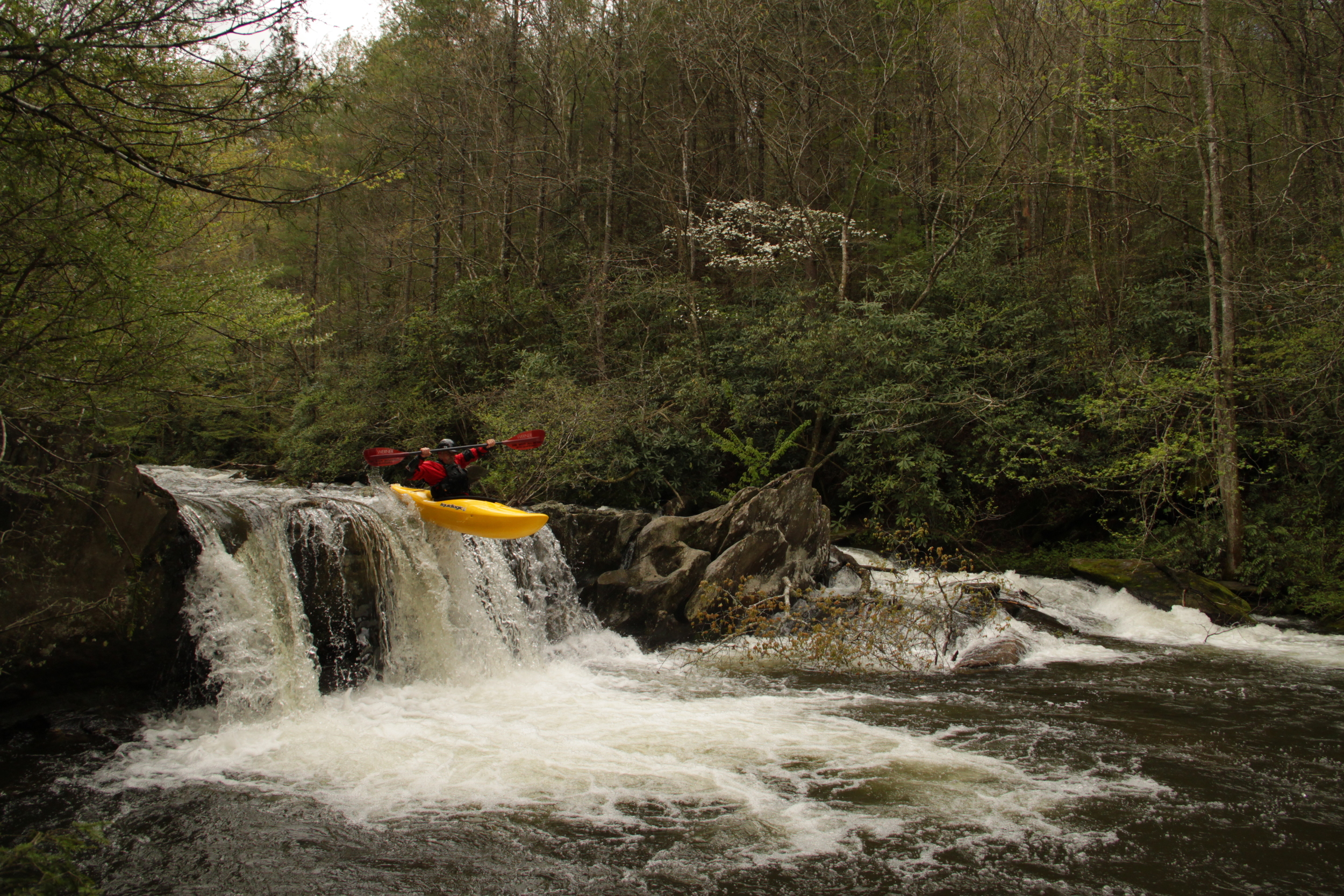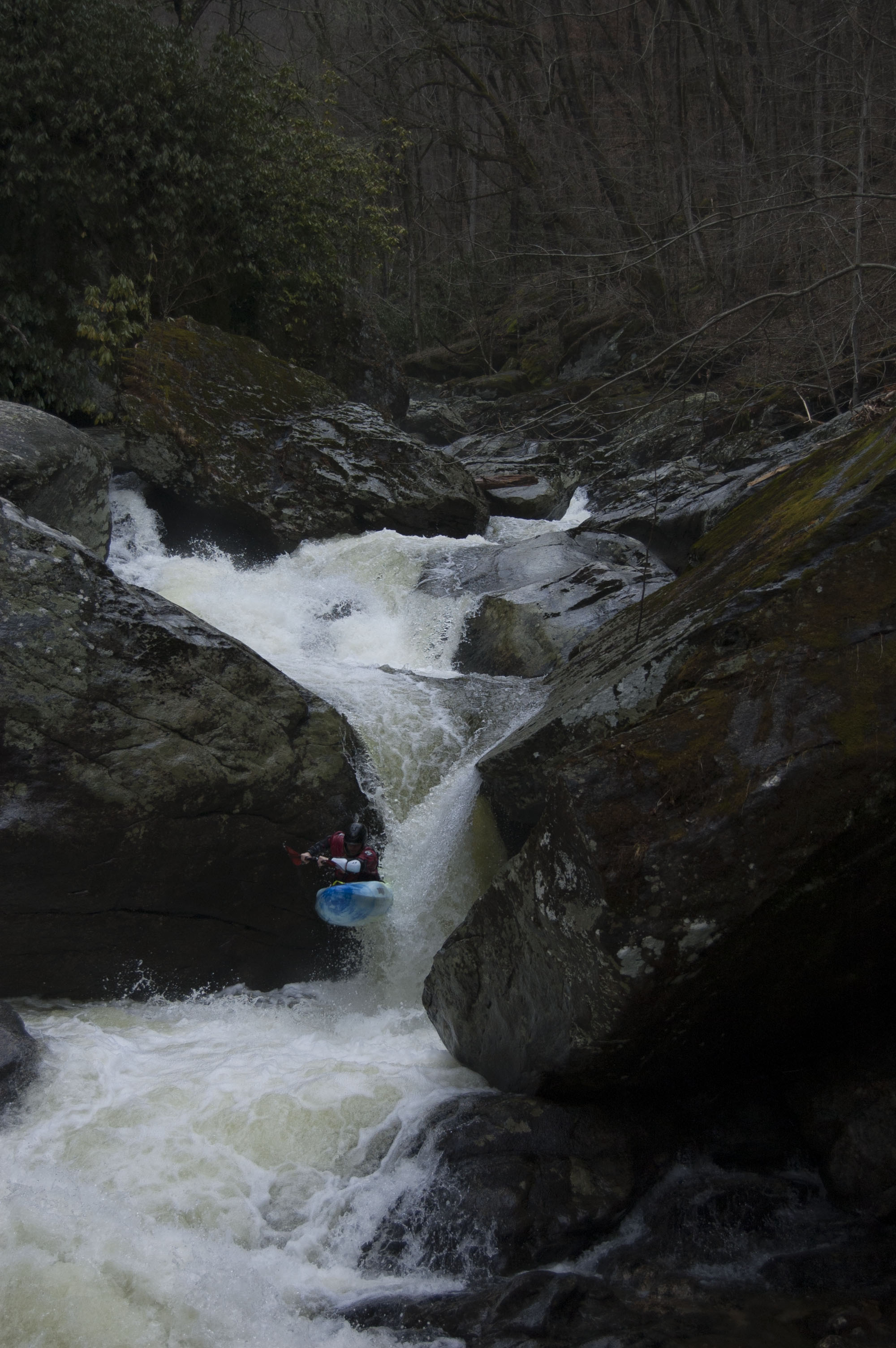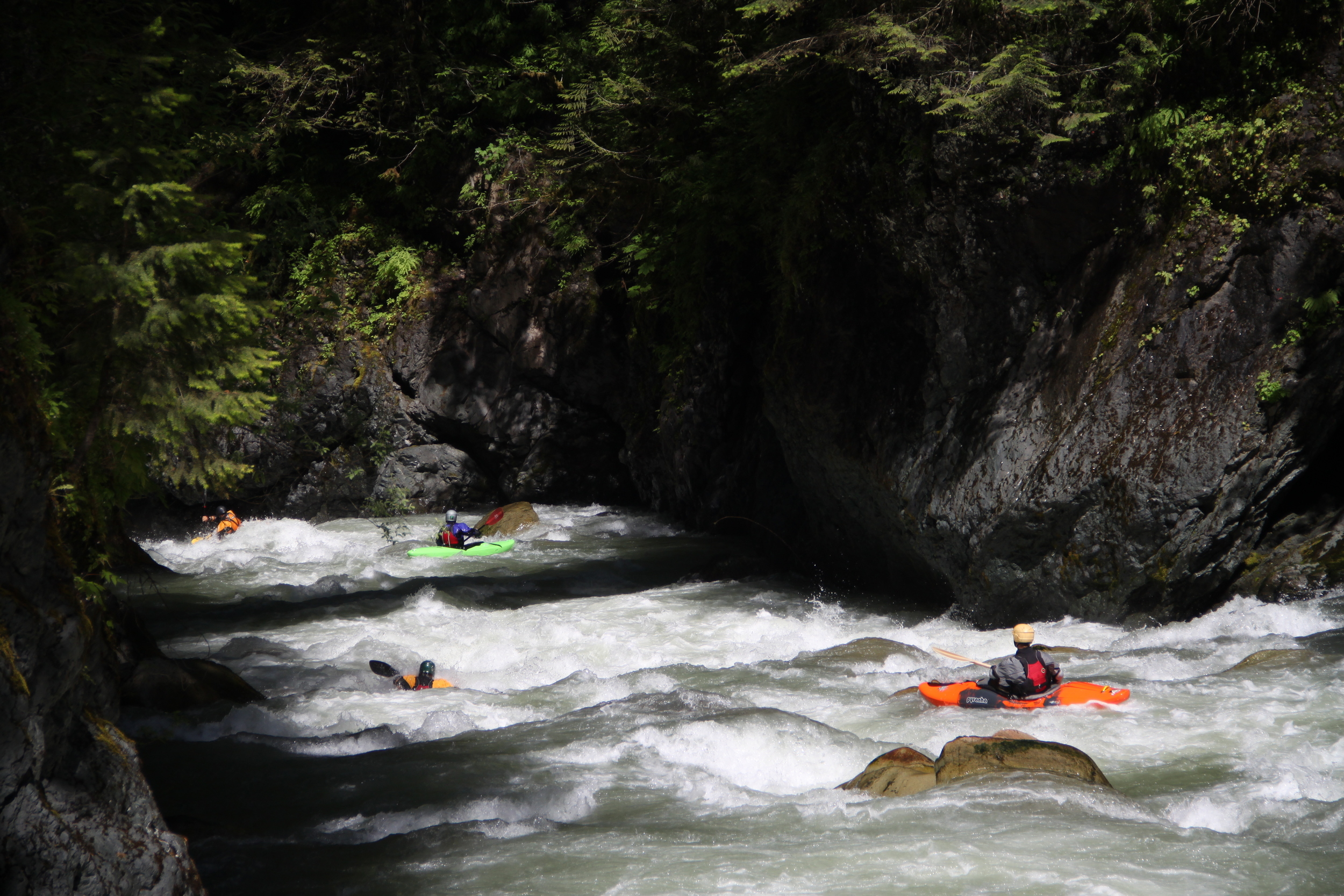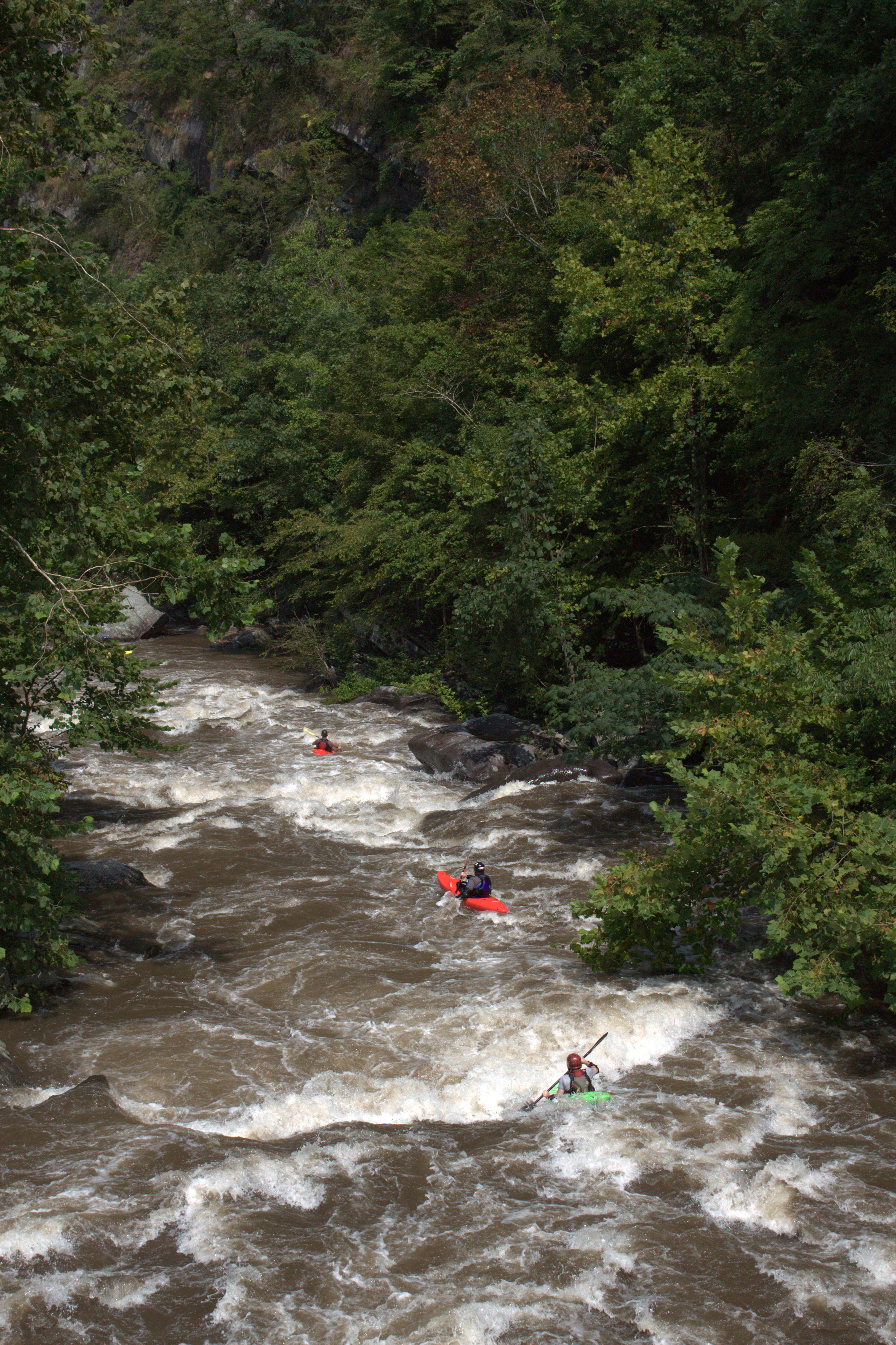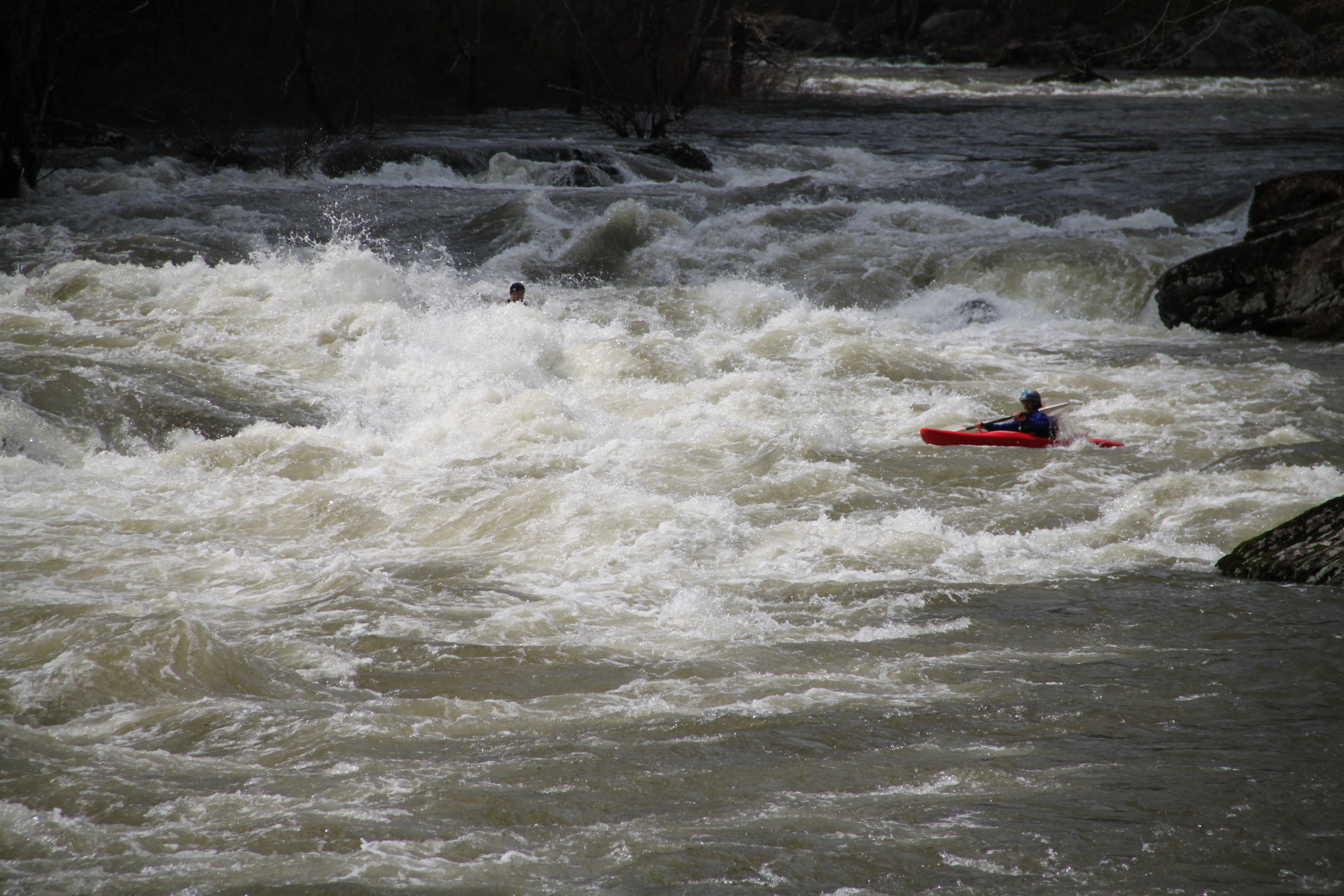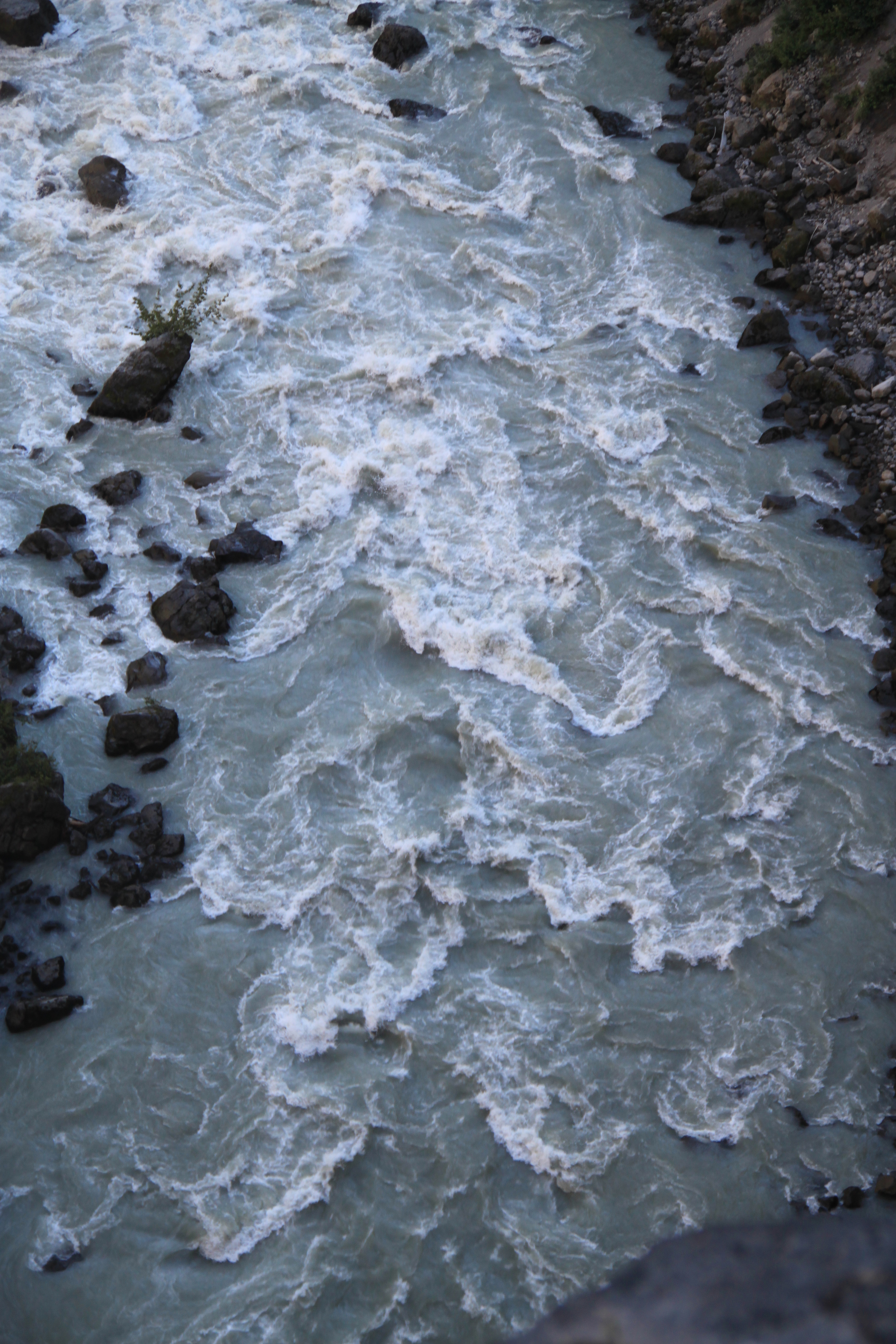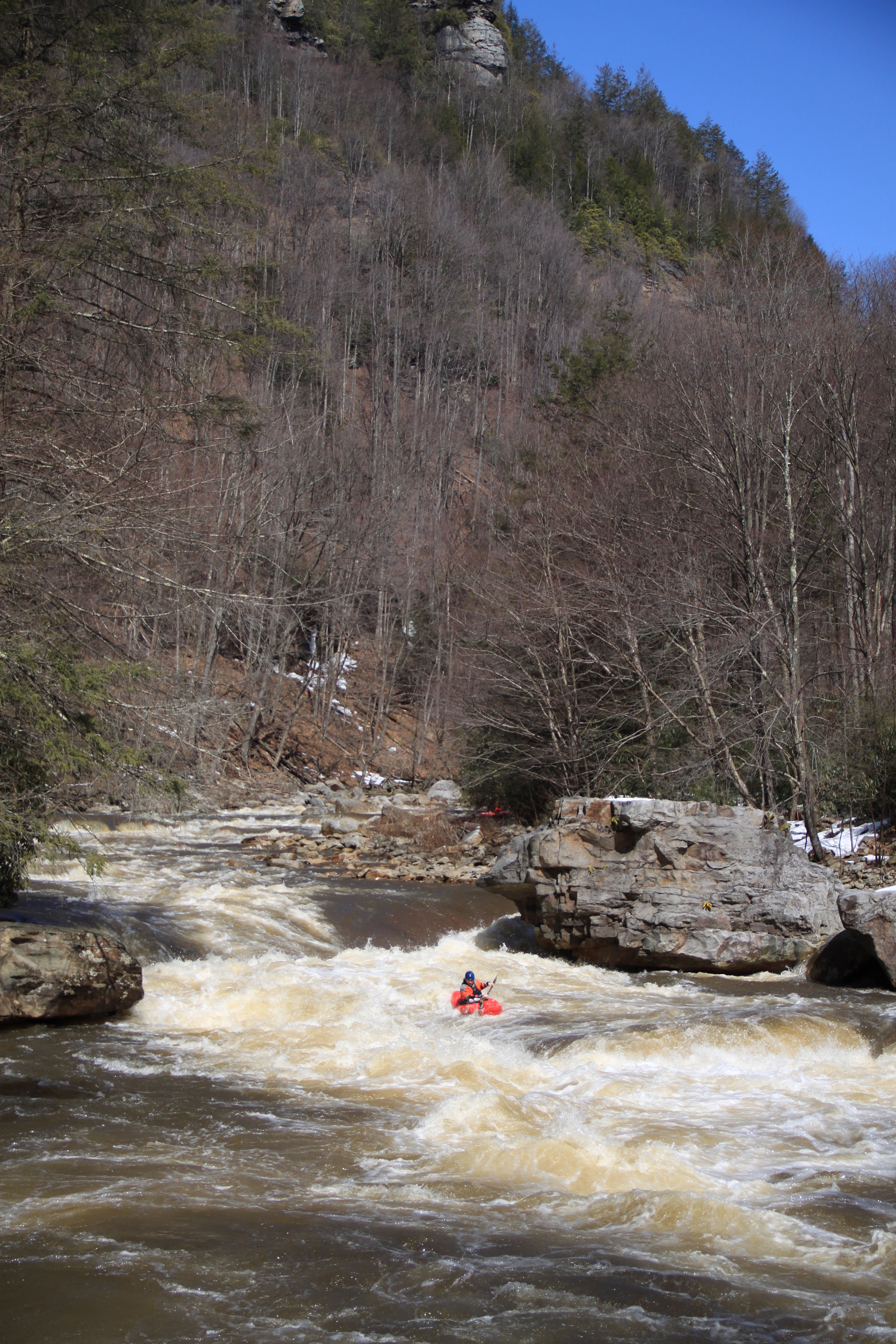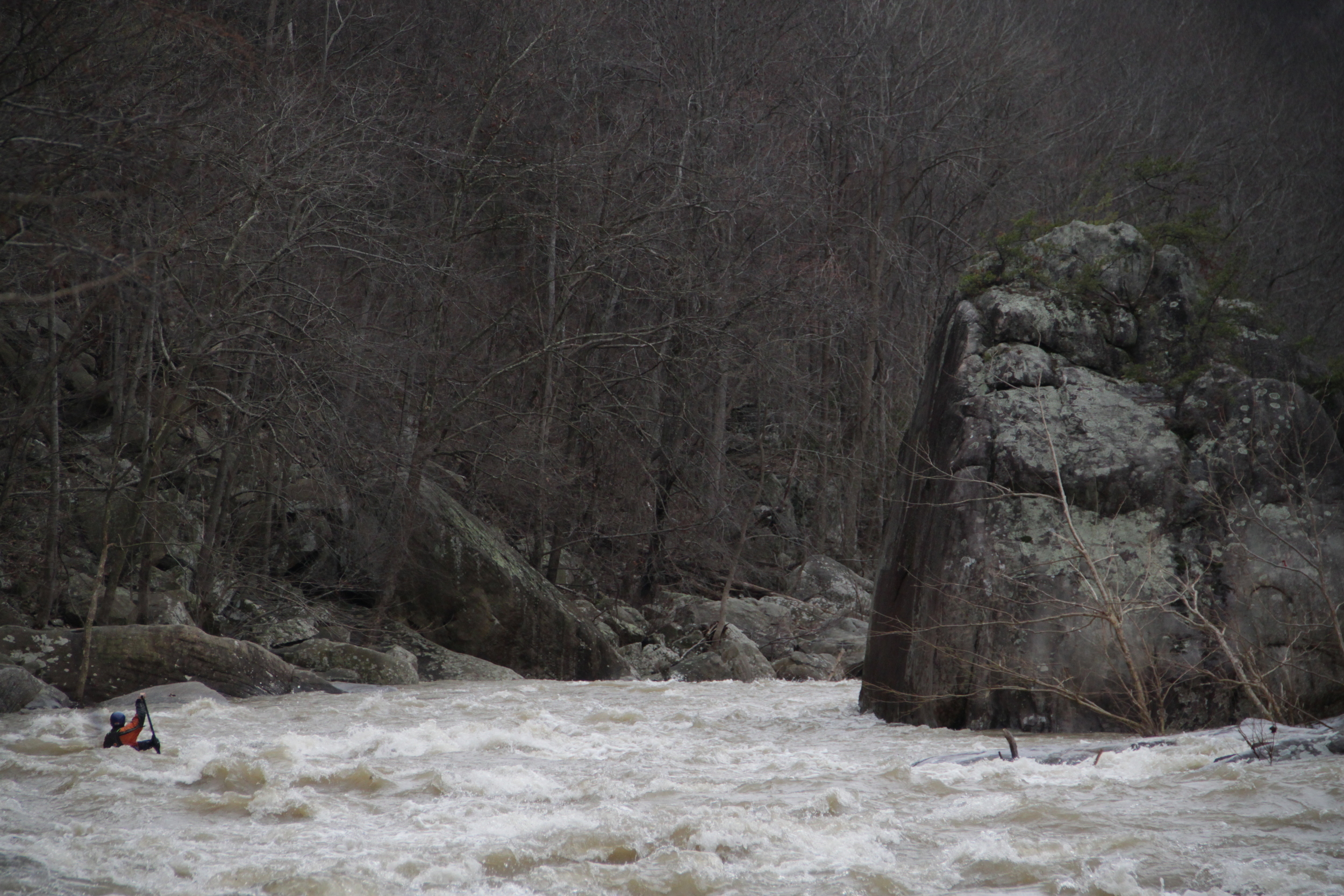Steve Krajewski generating lift on Little Brush Creek, Sequatchie Valley, TN
Why Boof?
What's all the fuss about boofing? What is it good for anyways? The standard claim for the use of the boof is to keep the bow of the boat on the surface of the water when landing a drop, which keeps the kayak out of the reach of sticky hydraulics and dangerous sub-surface features. Beyond the traditional utility of avoiding nasty holes/getting pinned under the water, and the sensation of flying through the air though, the boof has over the years come to take on broader meaning, as skills and technique have advanced. Click through the two scrolls of photos below. Which set appears to represent environments where boofing is more useful?
Early in my development as a paddler, I would have immediately chosen the first series of photos as those that clearly show more boof-intensive environments. This seems obvious. Streams with lots of ledges, waterfalls, and other vertical drops are clearly the arena of boof, right? Of course! But it took me a long time to learn that in fact the type of environments shown in the second series of photos reward good boofing skills just as much, if not more in certain instances, than the more classically considered boofing grounds. The boof has evolved into a philosophy of river-running that has allowed paddlers to progress beyond what was considered possible. Instead of plotting a line down a pushy river solely constructed to avoid all the holes, the ability to boof water, waves, and holes, allows paddlers to build lines that are more efficient and to more effectively tap into the river's energy. Being able to skip over any feature without losing momentum allows the spectrum of possible lines on a given rapid to broaden tremendously. Instead of being stifled by off-limits features within a rapid, boofing liberates us to create lines that serve higher-end goals like being efficient, conserving momentum, setting up for the next rapid, and our pursuit of grace and style.
Potential Misnomer?
The word boof originally was coined to describe the sound a boat makes when it lands a drop flat, but I think the name sells the technique short.. For a long time it has been an auditory affirmation that we just greased our move. However with the expansion of the idea behind the boof and its utility, I would wager that a majority of "boofs" used on the river by paddlers today make little to no sound at all. What is this sound after all, but the audible indication that energy is being squandered, released recklessly to the atmosphere, not to be salvaged?
Paddling is a freedom sport - make all the noise you want, if it feels good, it is good, right? Certainly! But beyond the occasional glory boof here and there, the ability to lift our bow over features serves the ultimate, central goal in kayaking of maintaining momentum. If we're focused on keeping the momentum the river has given us, then why would we want to constantly give it away by pancaking and over-boofing every single feature on our trip down the river?
When I started learning to boof, I charged every rock and 6-inch pourover I could find, and I recommend everyone do the same when experimenting with the boof. Physical exploration of the technique is essential, and it's fun after all! In time though, it will become apparent that boofing is a means to a greater end - the goal of conserving momentum. Boofing for the sake of boofing, or letting each boof explode as if in a vaccum, will seem to undermine the true value of the boof in more and more scenarios. A this point the boof will begin to smooth in nature to fit the broader context of what the river demands at the given moment, only to exist as a functional component of a seamless series of movements with the water .
So whether your boof-stroke should result in the boof-sound or not depends on how focused you are on conserving momentum. Don't get hung up on the name! Some of the most important "boof-strokes" of your life in fact will elicit nothing but silence from the water's surface.
Air Time
It's also important to note that air time is not always a product of boofing, though it's implied in the contemporary understanding of the term. A boof-stroke simply raises the bow slightly (a few inches or so) for a very brief period of time. With proper timing, this stroke won't necessarily generate air time, but will skip the bow over a feature that it would have otherwise pierced into. The increase in bow-height required to cleanly skip over a feature as opposed to bury through it is very minimal. If this stroke is taken at the precipice of any sizable vertical drop, though, air time will be an added product of the boof-stroke.
While airtime can be fun, how you'll need to manage it depends very much on the circumstances the river presents to you. Air time without purpose can be detrimental to your line, and your health! Downhill skiers try to minimize air time for the sake of reducing drag, all in the name of speed. Atmospheric drag isn't nearly as in play for our comparatively slow sport, but we still want to manage our time in the air wisely. If we at all wish to carry speed away from a drop and into the next feature, we'll need to not just savor air time, but use the time it gives us to set our landing angle to best conserve momentum. We'll discuss these techniques (the stomp) later on. For now, just know that air time isn't always a result of boof-strokes, nor is it often the goal.
Boofing in a vaccum - Intoxicated with air, I boof into oblivion, and a little back pain, photo by Nick Wigston
The Lift: Channeling Momentum into the Third Dimension
Irrespective of the result of our boof-stroke - sound or silence, air time or not, pancake, plug or watermelon seed, our boof-stroke really boils down to generating lift. The need for generating lift on the river is constant, and lift helps us channel momentum not just fore, aft, and side to side, but in a vertical direction. It sets us free by taking our paddling to the third dimension. The boof has been in a box far too long. Boofing is just lifting. The virtues of lifting our bow on the river are endless. Your stroke cadence on any given river should be laden with lifting strokes. In this way, you'll not only boof ledges, rocks and curlers, but also holes, waves, pillows, eddylines, and every type of water feature in between.
So let's get into the nitty-gritty of just how exactly we go about creating lift. There's features in our environment we can use, which help generate lift through deflection, and there's a way of generating lift completely on our own through the use of leverage. The next post is really going to get into the physics and methods behind using deflection to generate lift. Enjoy!


